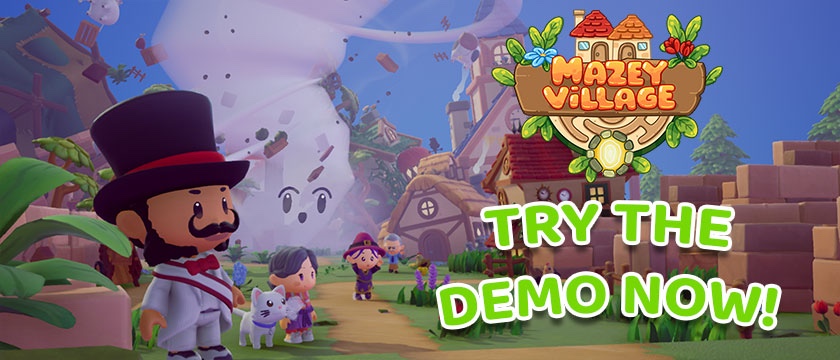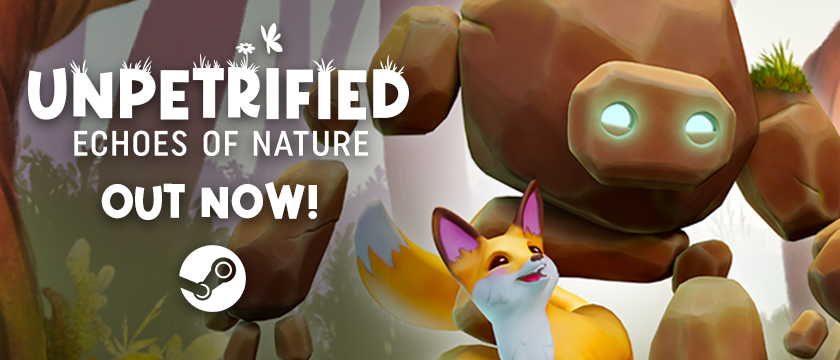Game: Millennia
Genre: 4X Strategy, Simulation
System: Steam (Windows)
Developers | Publishers: C Prompt Games | Paradox Interactive
Controller Support: No
Price: US $39.99 | UK £34.99 | EU € 39,99
Release Date: March 26th, 2024
Review code used, with many thanks to Johnny Atom PR.
Developed by C Prompt Games and Paradox Interactive, Millennia is a 4X strategy game that will take you through 10,000 years of Earth’s history.
Millennia may look like Civilization VI, Humankind, and Old World, with its hex-based tiles and fog covering the map, it would give you the impression that it’s just another clone of the games I’ve previously mentioned. However, Millennia has some creative mechanics that will distinguish it from the competition. To spice things up, there are alternative history twists as you play through Millennia.
Long-time readers of LadiesGamers will know that I have covered several strategy games over the years. Having played the demo build of Millennia released as part of Steam’s Next Fest, I was impressed by what I saw in the demo, so reviewing the full game has been great fun.
Choose Your Playstyle in Millennia

When you begin a game of Millennia, you can choose the option to have a Quick Play, where the game picks your opponents and starting bonuses. You can also tailor the gameplay by choosing how many opponents you want on the map and bonuses that match your play style.
In my case, I went with quick play for my first game, and then Kaifeng appeared surrounded by white fluffy clouds. The early turns involved exploring nearby tiles with warriors and scouts to discover villages. These villages can be absorbed, offering a choice between rewards, potential vassal cities, or rival empires.
Ages in Millennia

From the Stone Age to the Bronze Age and beyond, you’ll experience many different ages in each playthrough. The unique thing is that history isn’t set in stone in Millennia, so your path through each Age isn’t fixed, and it can deviate a lot from what’s in textbooks.
As a new age begins, it opens up opportunities for you and every nation to explore different technologies, construct new buildings, and engage in new trade. For instance, during the Bronze Age, you could prioritise religion, governance, or production, like mining and shipbuilding.
After completing several research projects, you can choose the next Age to progress to, typically the Age of Iron. However, by achieving optional objectives, you might enter the Age of Heroes or the Age of Blood through warfare.

This period, known as the Crisis Age, leads to much darker times until history can be restored by advancing to the next Age. More crises await, such as the Age of Ignorance, marked by anti-technology sentiments, or the Age of Plague. Unlucky for me, I’ve seen the Age of Plague during my playthroughs as I neglected my citizens and built a huge army instead, there is a fine line you must thread between production and protecting your nation. However, moving into an alternative Age isn’t all bad; for example, the farms that you can build during the Age of Plague can give you some serious food buffs for a good period of time.
The Ages add a pretty big advantage, especially if you are first in line to move to the next Age, as you’re able to pick what comes next and determine what positive or negative effects everyone will face through the subsequent turns and other nations will have to try and catch up with you.
I like the Age system in Millennia. It allows the gameplay to change. Granted, that is only sometimes for the better when it’s a Chaos age, but it does mix the gameplay up and keep it interesting. So, each game of Millennia you play will be different from the last game you played.
Explore, Expand, Exploit, and Exterminate

As you manage your initial city, it’s crucial to expand your territory, helped along by the Domains you gain; you start with a Tribal Government, simple Warfare, and Exploration Domains, and more are added as you progress in the game. As you accumulate cultural points, one strategic move is to establish additional settlements nearby, which will strengthen the borders of your nation and grant access to valuable local resources.
For coastal regions, founding a settlement enables fishing and shipbuilding, offering a strategic advantage. Then, for landlocked nations, settling near fertile land for farming and hunting opportunities is a priority. Additionally, to make the best of the resources, you can utilise farms and plantations to provide food for your citizens.
Furthermore, each settlement requires infrastructure development through various buildings. A technology tree allows you to build more productive buildings, forming a chain of goods which can be used to trade with other nations on the map. Of course, laying the groundwork for more advanced industries is a consideration for the later stages of Millennia.
National Spirits and Diplomacy

Once you progress further in Millennia, you can choose a National Spirit. National Spirits will become available as you advance through the Ages, and you can see from the screenshot above that you can have Warriors and Raiders as special warfare units or Olympians to enhance your diplomacy, for example.
Diplomacy in Millennia is a bit of a letdown. You can send gifts, propose open borders, and so on. However, diplomacy is carried out on a flat screen with just the nation’s flags on it. It lacks character and makes you feel like you are just pressing buttons. I’d have liked to have a more in-depth diplomacy screen. Even adding a nation’s character to it would have been better than a flag.
Combat and Barbarians

In Millennia, the combat mechanics are kind of unique in the way you can move your units around the map. You can merge units on one tile to make much bigger armies. There is also a morale system for each unit, but it mainly makes units stop fighting without adding much, so I’m not sure I like it. As you play, you can grow your armies by adding more units. Some units can even level up to become leaders, giving buffs to their armies.
Barbarians can also have a warlord, which is their version of a leader. I understand that the barbarian warlord is a strong unit, but one barbarian warlord can take out an entire army, so I think they might be slightly overpowered.

When your units engage in combat, you don’t see your units on the tiles on the map; instead, a combat screen pops up. When I played the demo of Millennia, I didn’t particularly like the combat screen. I would have preferred to see the action happen on the map; however, after spending more time with the game for this review, the combat screen has grown on me. Still, like the Diplomacy screen, I’d have liked to see more action, but all the relevant information is on the screen, so you can see what is happening.
Visuals, Music and a Few Niggles

Graphically speaking, Millennia is a good-looking game, though it won’t blow your socks off with AAA graphics. But then, this is an indie game, so you wouldn’t expect it to look like a triple-A title, and for a 4X strategy game, it looks pretty good. The music is as you would expect for a grand strategy game: majestic at times and quite relaxing to listen to as you conquer the map.
I do feel that certain aspects of the UI aren’t large enough, and the pop-up tool tips’ text could be larger, as the writing is tiny. This can make resource and city management harder than it needs to be, and I couldn’t find anything in the game settings to increase the size of the UI. However, I did get used to the UI and the text size the more I played the game, and by then, I didn’t need to read them.
At the beginning of playing Millennia, it ran fine on my laptop. However, I did notice some slowdown as the nations got much larger as I panned across the map.
In the version of the game I played for this review, multiplayer wasn’t available. However, for players who like to play against friends, local and online hotseat multiplayer will be available at launch.
Runs on the Steam Deck
Millennia does run well on the Steam Deck, though I wouldn’t advise playing it on the Deck until you get used to the UI and know what the tooltip says; naturally enough, with a smaller screen, the text is minute.

Conclusion – A Grand Strategy
There are a lot of mechanics to discuss in Millennia, and there is too much to put into a review of the game. However, there is plenty of depth on offer in Millennia which is sure to please any long-time fan of this genre, and it also doesn’t overwhelm you with options thrown at you all at once. I found Millennia to be a refreshing strategy game that is enjoyable to play, and I can see myself playing it for a good while to come.
Final Verdict: I Like it a Lot 




